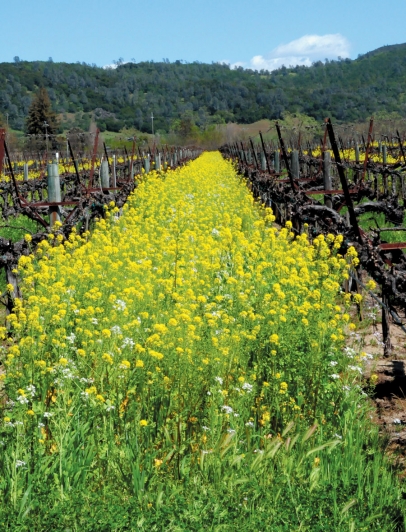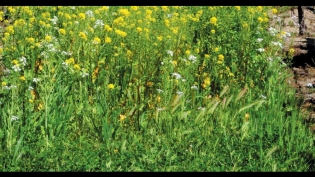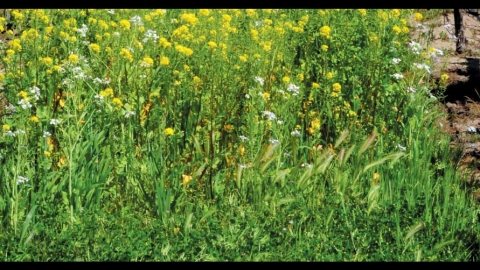Wild Mustard and it's Brassicaceae Brethren
The brilliant yellow wild mustard that blankets the vineyards in spring belongs to the Brassicaceae family of flowering plants, the same family that includes cabbages, broccoli, horseradish, watercress and turnips. Like other family members, wild mustard contains a pungent compound that is responsible for the distinct, sharp, even sulphurus taste that distinguishes this large and complex family.
The Brassicaceae family can be thought of as having three main culinary categories: Western, Asian and seed, the latter being used for making the ubiquitous condiment we know as “prepared mustard.”
We’re most familiar with the western members of the family like cabbage, broccoli, mustard greens and Brussels sprouts, so the Asian ones seem more “exotic,” and can be a bit confusing, in part because of linguistics. The same vegetable might be called by its Chinese, Japanese or Thai name.
When you visit the booth of a Hmong, Japanese, Chinese or other Asian vendor at our local farmers’ markets you are likely to find an extensive array of greens, and almost all of these will be members of the Brassicaceae family. Even if you can’t pronounce the names, or are unsure of what you are buying, you can be pretty certain that it’ll have at least a hint of mustard.
The still-cool spring is an ideal season for both western and Asian Brassicaceae greens because, as the weather becomes warmer, the more the hot flavor associated with mustard develops.
Steam, stir-fry or braise the greens, then dress with a little sesame oil, rice wine vinegar and chili flakes for a tasty side dish, or add them to an Asian-style noodle soup.
Mustard seeds, the seeds used to make the condiment mustard, come from specific members of the mustard family that have been selected over the years for their pods that don’t shatter, spilling their seeds. The climate where the plants are grown is important as well, because warm temperatures bring on early flowering that results in poor-quality seed production. Canada and Nepal are the world’s largest producers of mustard seeds, but they are also grown in the United States, France, Russia and other parts of the world.
There are three main kinds of seeds grown to make prepared mustard: black (Brassica nigra), brown (B. juncea) and white (B. hirta/Sinapis alba). Each produces a different style of mustard: French’s neon yellow ‘French’s-style mustard’ is made with white mustard seed; the Dijon style is made with black seeds; and Chinese hot mustard is made with brown seeds. Stoneground mustards are usually made with brown mustard seeds. All deliver varying degrees of heat.
Some mustards use two or even all three of the types of seeds, and may also include mustard powder, lemon zest, garlic, honey, water, vinegar and even flour.
A rare mustard, but one of my personal favorites, is a smooth, mid-spicy concoction made with violet blossoms. Another favorite is a grainy German mustard that includes orange juice and orange zest.
Mustards are most commonly used as condiments, but they are also excellent to use in cooking, either as part of a marinade or basting sauce or added to the finishing sauce itself.
Bulk mustard seeds and ground powder are available at many spice suppliers and even local grocers. I encourage you to have a go at making your own prepared mustard, or at least to explore the various types available.






